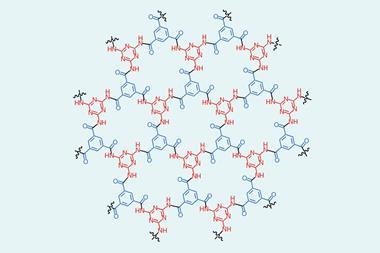Researchers have made a transistor from one-atom-thick silicene for the first time
The world’s first one-atom-thick silicon transistor has been made by scientists in the US. The transistor was created on a two-dimensional silicon material known as silicene, which has exceptional electrical performance that may even rival graphene.
Over the past decade, the emergence of graphene has stimulated interest in producing two-dimensional allotropes of other elements. Phosphorene and germanene have both been grown from their three-dimensional counterparts in the hope they can usurp conventional semiconductors and be integrated into processors. But silicene, first produced in 2012, may provide a better route to superior electrical performance by virtue of its compatibility with current electronics manufacturing.
‘Electronics are still based on silicon,’ explains Patrick Vogt from the Technical University of Berlin, Germany, who was not involved in the research. ‘It may be much easier to integrate silicene-based structures or layers into this technology.’
But silicene is very hard to produce. ‘The great challenge for these non-planar 2D crystals is that they’re very sensitive to their environment,’ says Deji Akinwande from the University of Texas, US. He goes on to explain that silicene contains ‘dangling bonds’ that allow it to quickly degrade in air.
Akinwande and his colleagues avoided this issue by developing a new manufacturing process for silicene. ‘You basically evaporate silicon atoms onto a crystalline silver surface,’ he tells Chemistry World. This process is conducted under vacuum, with the silver film layered on top of a silicate substrate. Once the silicene has been made, it is coated with aluminium oxide which protects it from degradation in air.

The team then de-laminated the silver–silicene–aluminium oxide sandwich from the silicate. ‘Once we de-laminated it, the silicene [was] fully encapsulated,’ adds Akinwande. ‘We put this [sandwich] on a device substrate and to measure the electronic properties of the silicene, we remove the silver.’
By etching a section of the silver layer, the researchers were able to create two silver electrical contacts. In connection with the silver contacts, the exposed silicene behaved like a transistor and was able to transfer current, showing a modest semiconducting band gap. It was still vulnerable to air however, degrading within a few minutes of exposure.
But Akinwande argues that this will not be a major issue: ‘The way to make sure it doesn’t degrade is to cover it – we need to put a coating layer [over it] immediately after the silver removal.’ He adds that a similar coating process has been demonstrated for another two-dimensional material, phosphorene.
‘This device shows that it is possible, in principle, to make such a transistor using silicene,’ says Vogt. ‘Silicene was first synthesised in 2012 and it’s only [taken] two and a half years to show that a transistor works, which I think is quite impressive.’












No comments yet